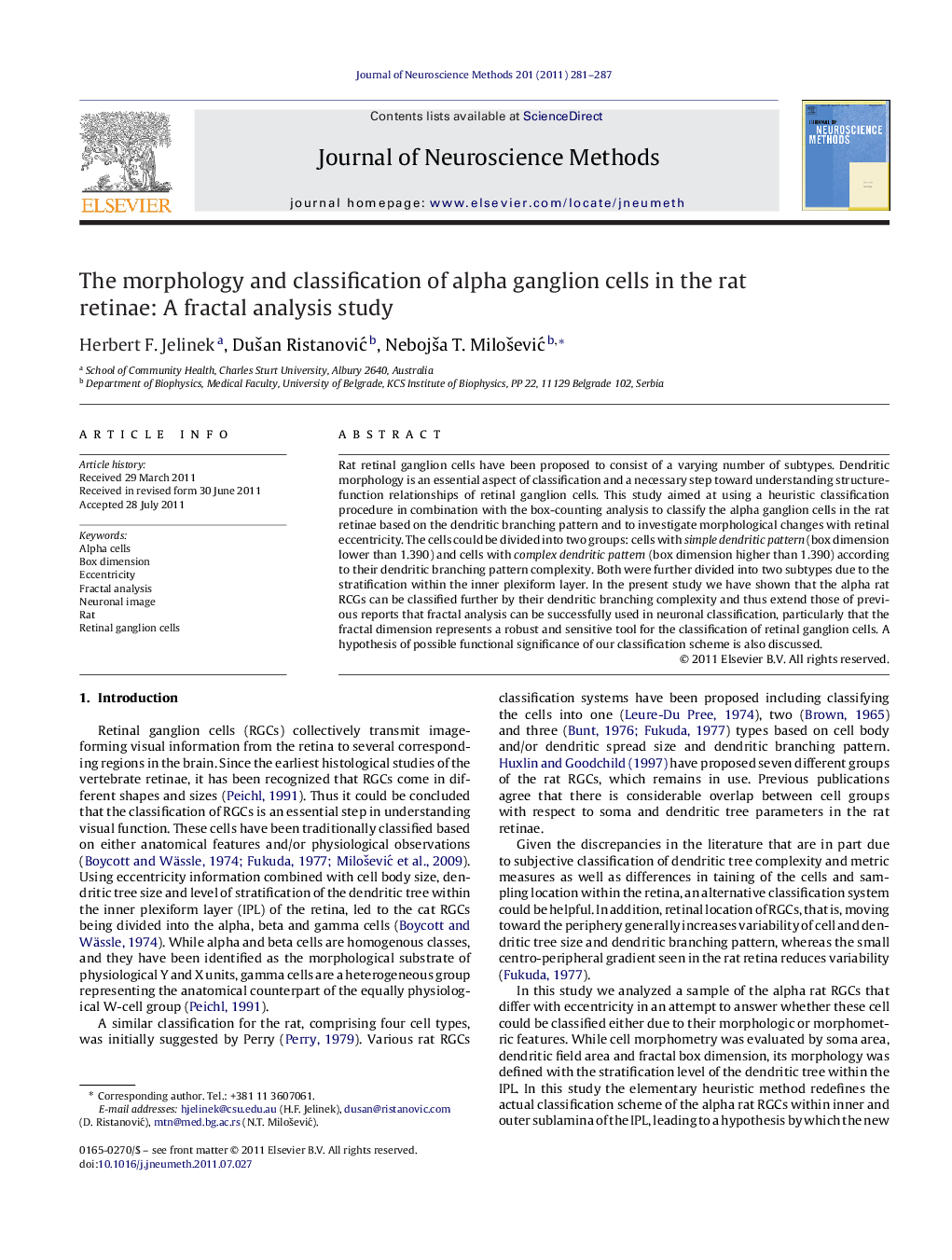| Article ID | Journal | Published Year | Pages | File Type |
|---|---|---|---|---|
| 6269634 | Journal of Neuroscience Methods | 2011 | 7 Pages |
Rat retinal ganglion cells have been proposed to consist of a varying number of subtypes. Dendritic morphology is an essential aspect of classification and a necessary step toward understanding structure-function relationships of retinal ganglion cells. This study aimed at using a heuristic classification procedure in combination with the box-counting analysis to classify the alpha ganglion cells in the rat retinae based on the dendritic branching pattern and to investigate morphological changes with retinal eccentricity. The cells could be divided into two groups: cells with simple dendritic pattern (box dimension lower than 1.390) and cells with complex dendritic pattern (box dimension higher than 1.390) according to their dendritic branching pattern complexity. Both were further divided into two subtypes due to the stratification within the inner plexiform layer. In the present study we have shown that the alpha rat RCGs can be classified further by their dendritic branching complexity and thus extend those of previous reports that fractal analysis can be successfully used in neuronal classification, particularly that the fractal dimension represents a robust and sensitive tool for the classification of retinal ganglion cells. A hypothesis of possible functional significance of our classification scheme is also discussed.
⺠Advances in rat retinal ganglion cell classification. ⺠Statistical analysis confirms previous reports on cell categories and suggests possible subdivision. ⺠Use of heuristic classification for identifying possible groups of retinal ganglion cells.
